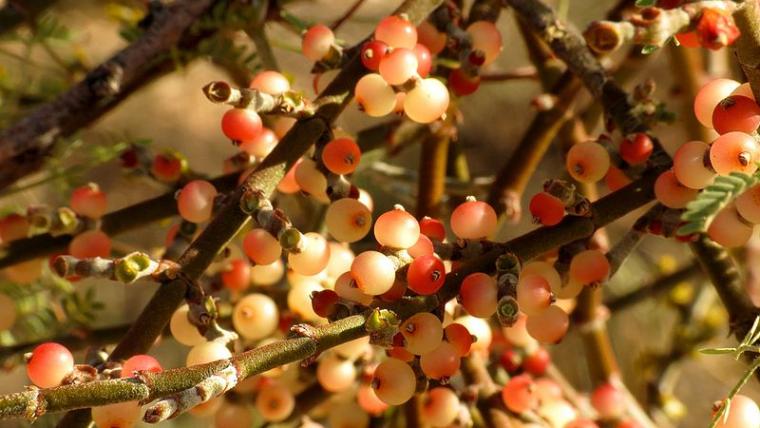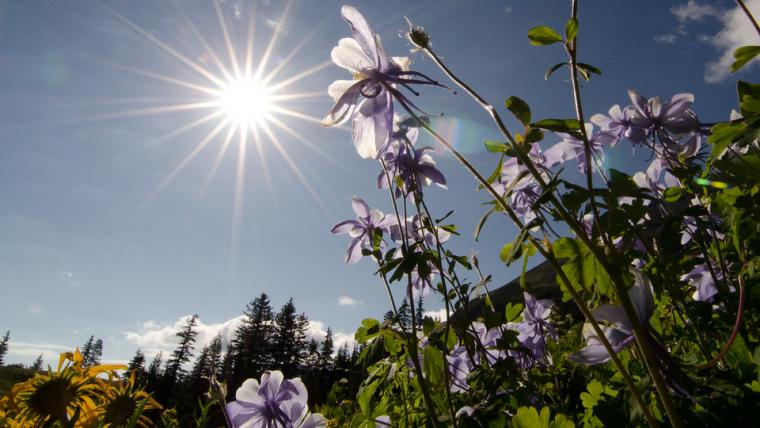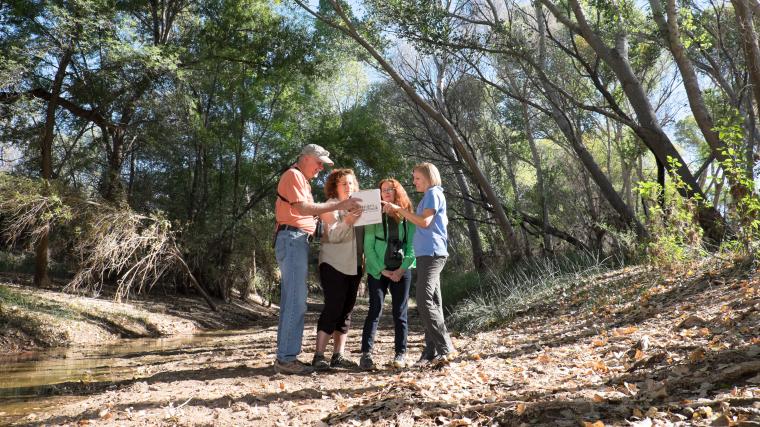
With the right resources, untrained observers record high-quality data


It is with heavy hearts that we tell you of a great loss to the USA National Phenology Network. In May 2018 we lost Patty Guertin, our staff botanist who had been with us since the start of the USA-NPN. Taken from the world by cancer far too soon, she is sorely missed by her family, friends, and the coworkers who consider her family.
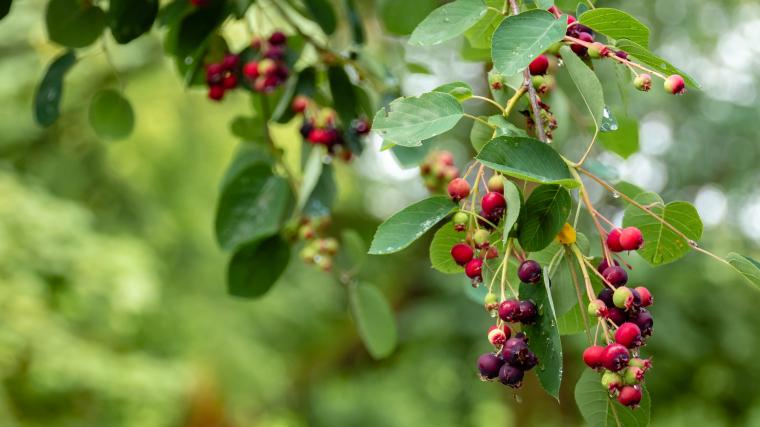
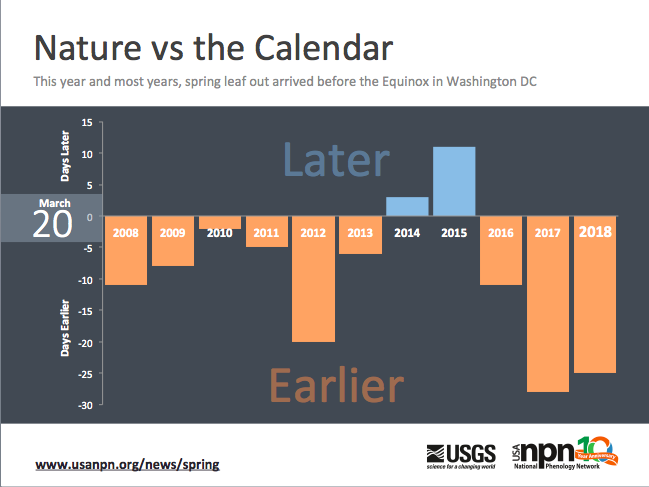
In most of the last ten years, the First Leaf Index has arrived days to weeks earlier than calendar spring in the Washington, DC area. This year, spring leaf out arrived 25 days earlier than the Spring Equinox in Washington, DC.

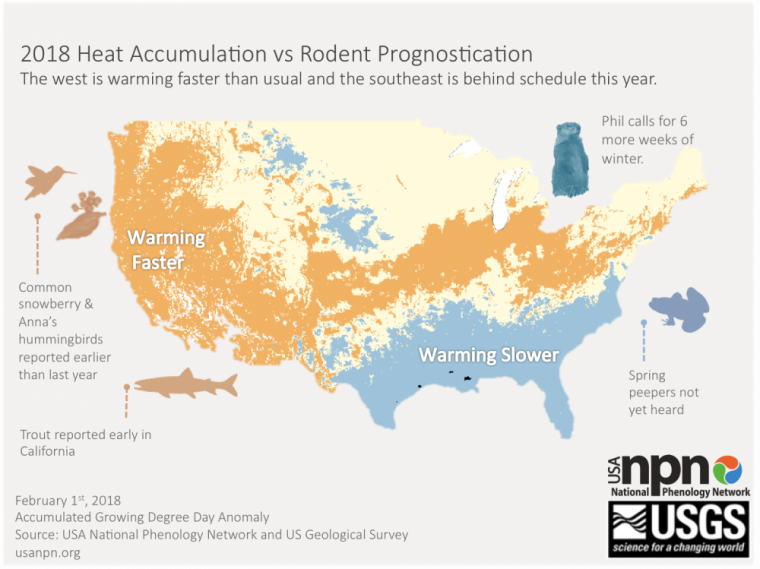
Punxsutawney Phil predicts six more weeks of winter. We agree - if we're talking about the eastern US. The southeast especially has been cool so far this year. In the west, we are already seeing signs of early spring from trout to snowberries. A new forecast by collaborator Toby Ault also calls for a early spring in the west, late in the east.
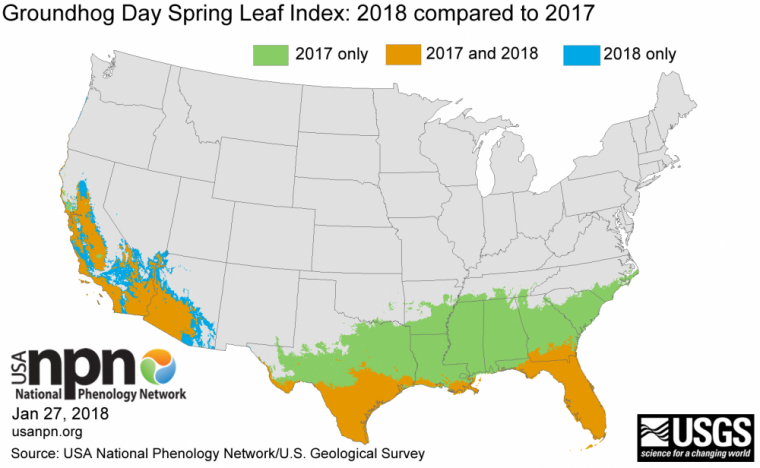
By Groundhog day in 2017, spring had arrived 3-4 weeks early across much of the Southeast. This year, it looks like we will not see a very early spring in the Southeast. However, we predict that by Groundhog day this year, spring will have spread even further into Southwest states this year than last.
